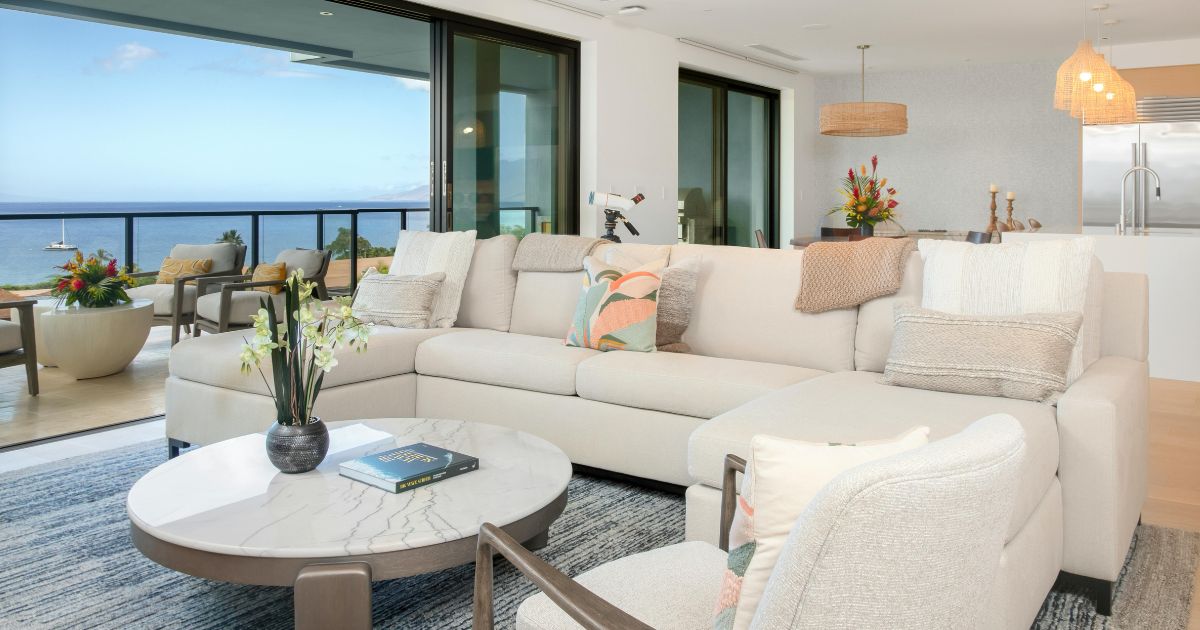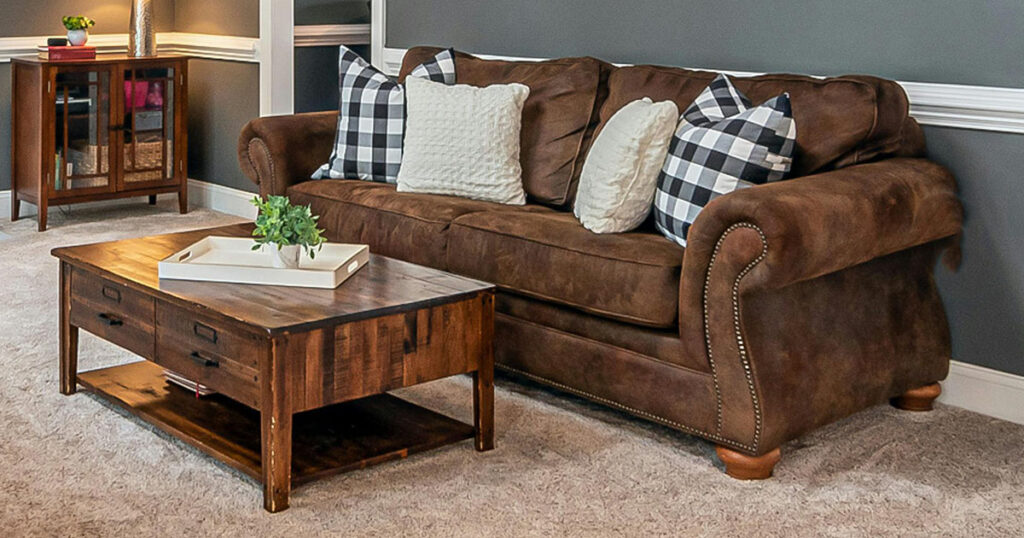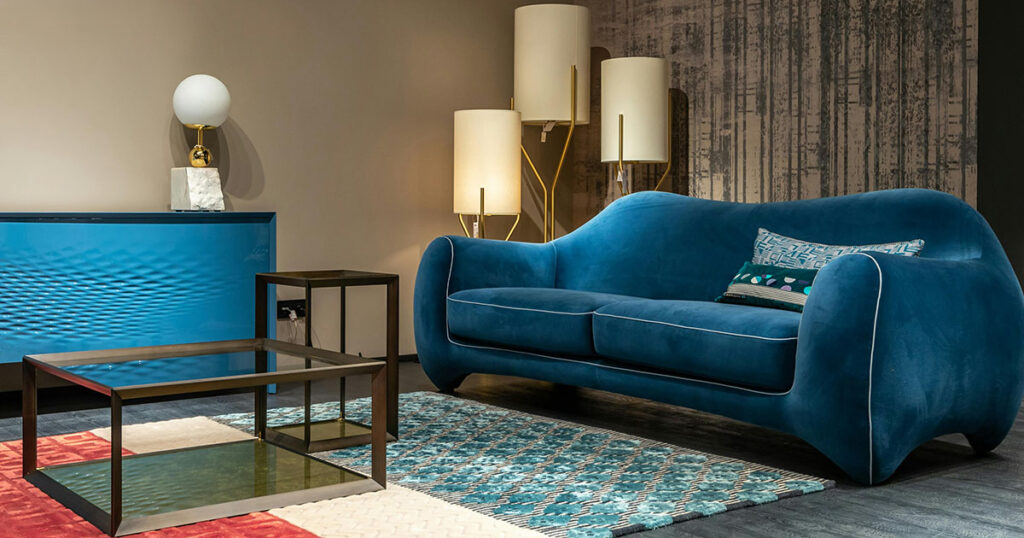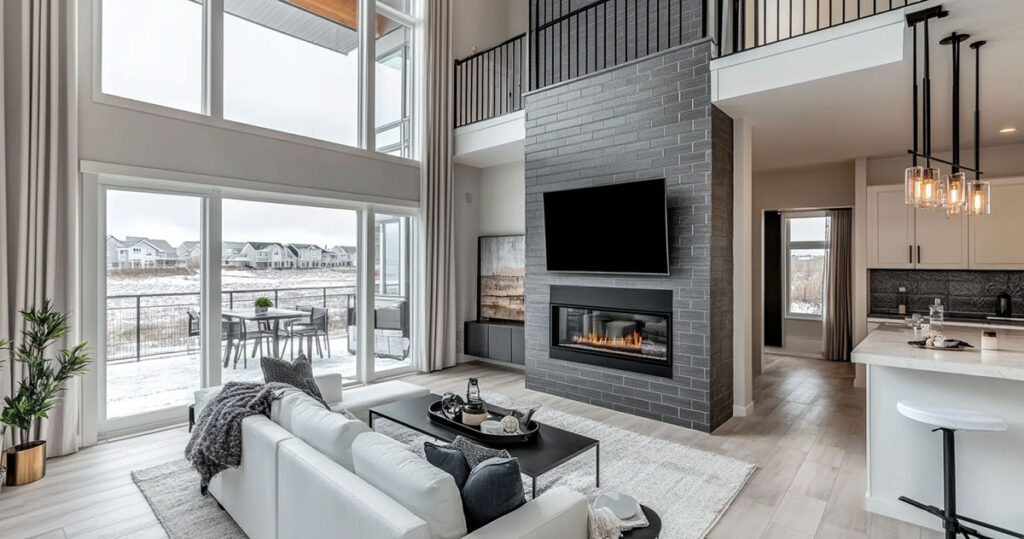Coastal interior design brings the serene feeling of the beach into your home with light colors, natural textures, and ocean-inspired elements.
A well-chosen rug can anchor this style and enhance your space.
This guide will help you select the ideal rug that complements your coastal interior, whether for your home or a commercial setting.
What Makes Coastal Interior Design Special?
Before diving into rug selection, let’s understand what defines coastal style:
Key Elements of Coastal Design
Coastal interiors create a light, airy atmosphere that mimics the relaxed feel of seaside living. The style features:
- Bright, Open Spaces that maximize natural light with open layouts and large windows
- Ocean-Inspired Color Palette including whites, sandy beiges, and various blue tones
- Natural Materials like weathered wood, rattan, and textural fabrics
- Understated Beach Motifs that suggest the shore without being overly themed
The overall effect is fresh, natural, and restful—like a peaceful day at the beach brought indoors.
Rug Colors That Enhance Coastal Style
The color of your rug plays a crucial role in tying your coastal interior together. Here are the best color options:
Ocean Blues and Seafoam Greens
Blue rugs naturally complement coastal decor by echoing the ocean. From pale sky blue to deeper navy, these colors reinforce the seaside feel. Seafoam green and aqua rugs also work beautifully, bringing in those water-inspired tones that define coastal spaces.
Sandy Neutrals and Whites
Rugs in warm beige, ivory, or light gray resemble sand and driftwood, creating a neutral base that complements the tranquil coastal atmosphere. A cream or off-white rug can underscore the airy feel while letting other decor elements shine.
Soft Pastels and Accent Colors
For a cottage-style coastal look, consider rugs with gentle pastel tones like faded coral or shell pink. These soft colors add warmth without overwhelming the space, especially when your room already features predominantly neutral tones.
Multicolor Coastal Combinations
Some rugs incorporate the full coastal palette in a balanced way. A rug that mixes ivory, light blue, and seafoam green can pull together various pieces in your room while maintaining the cohesive beach-inspired look.
Patterns and Textures That Work Best
Beyond color, the pattern and texture of your rug greatly influence how well it supports your coastal style.
Coastal-Friendly Patterns
Several patterns naturally complement coastal interiors:
Stripes
Blue and white or blue and beige stripes instantly evoke nautical themes, reminiscent of beach umbrellas or cabana awnings. This timeless pattern works well in casual areas and pairs nicely with solid upholstery.
Botanical and Coastal Motifs
Subtle nature-inspired patterns like palm fronds, coral branches, or wave designs bring coastal landscapes indoors without being overly literal. The key is choosing designs that suggest these forms in an artistic way rather than cartoonish depictions.
Geometric and Trellis Patterns
Simple geometric patterns in coastal colors add contemporary flair. A trellis or diamond grid pattern in white and navy or beige and aqua fits right in while keeping the space feeling modern.
Abstract and Distressed Designs
Rugs with watercolor-like swirls or ombré effects often suit coastal rooms by resembling sea foam or water in motion. Similarly, vintage-look or distressed patterns in sea tones can add character and depth.
Textures That Enhance Coastal Style
Texture adds dimension to your coastal interior:
Natural Fiber Look
Rugs that mimic natural fibers like jute, sisal, or seagrass bring beach texture indoors. Even wool or synthetic tufted rugs can achieve this look with the right weave and color.
Pile Height and Construction
Consider both cut pile (where yarn ends are cut for a velvety surface) and loop pile (where loops remain uncut for a nubbier texture). Loop pile often has a more casual, handcrafted look that suits coastal settings, while cut pile offers a plush, luxurious feel.
High-low tufted rugs with varying pile heights can create visual interest by mimicking sand ripples or waves through texture.
Advantages of Tufted Rugs
Tufted rugs offer specific benefits that make them excellent choices for coastal design:
Design Flexibility
Tufted rugs can be made in virtually any shape, size, color, or pattern. This construction method allows for precise and intricate designs—perfect for creating custom coastal motifs like waves, corals, or abstract ocean-inspired patterns.
Color Customization
With tufted rugs, you can color-match to your interior exactly. This helps achieve those specific coastal tones like the perfect seafoam green or ocean blue that complements your existing decor.
Size and Shape Options
Tufted rugs can be made to any dimensions or shape you need. Whether you want a standard rectangle, a round entry rug, or a unique curved shape that follows your furniture arrangement, tufting allows for this flexibility.
Textural Variety
Tufted construction can produce different pile heights and textures—even within the same rug. This ability to create high-low carved effects can add dimension to your coastal design, mimicking natural elements like sand ripples.
Residential vs. Commercial Coastal Spaces
The approach to rugs differs slightly between homes and commercial spaces with coastal themes:
Residential Coastal Rugs
In homes, you can focus more on personal expression and comfort. Wool tufted rugs are popular for their durability in normal home use and pleasant feel underfoot. You can choose colors and patterns that perfectly match your vision, from whimsical seashell motifs to elegant wave patterns.
Commercial Coastal Applications
For spaces like hotels, restaurants, or offices with coastal themes, prioritize durability. Commercial-grade rugs typically use tougher fibers like nylon or polypropylene. Colors tend to be more neutral or universally appealing, and patterns more subtle. These spaces often require rugs that hide stains and wear while still conveying that breezy coastal feel.
How Rugs Enhance Coastal Rooms
A well-chosen rug does more than look pretty—it improves how your coastal room works and feels:
Defining Spaces
Rugs anchor furniture groupings and create defined zones, especially important in the open layouts common in coastal homes. A rug under your seating area immediately establishes that space as a conversation zone.
Reinforcing the Theme
Your rug can strengthen the coastal theme by echoing motifs of the seaside. A blue wave-patterned rug visually reminds you of ocean waves, enhancing the beachy mood every time you glance down.
Adding Comfort
Coastal interiors often feature hard flooring like wood or tile. A tufted rug instantly adds warmth and softness underfoot, making the space feel more inviting and livable.
Improving Acoustics
Large open coastal spaces with hard surfaces can suffer from echoes. Rugs absorb sound rather than reflecting it, creating a calmer acoustic environment that enhances the serene coastal vibe.
Practical Tips for Rug Placement and Planning
Getting the practical aspects right ensures your rug both looks great and functions well:
Size and Scale
Choose a rug large enough to anchor your furniture arrangement. For living areas, ensure at least the front legs of all seating pieces rest on the rug. In dining areas, the rug should extend about 24 inches beyond the table on all sides to accommodate pulled-out chairs.
Strategic Placement
Center your rug under key pieces like coffee tables, and align it with room features. In a coastal setting, you might orient it to highlight a great ocean view or fireplace. Ensure walkways remain clear of rug edges to prevent tripping.
Layering for Depth
Consider layering rugs for added visual interest. A popular technique is using a large natural fiber rug as a base with a smaller patterned rug on top. This creates rich texture perfect for coastal style—like the layered textures of sand, shells, and water at the beach.
Pattern Proportion
Match the scale of your rug’s pattern to your room size. Larger rooms can handle bold, oversized patterns, while smaller spaces might benefit from subtler designs. Balance your rug pattern with other patterns in the room for a cohesive look.
Bringing It All Together
The perfect coastal rug ties your space together both visually and functionally.
Whether you choose a blue striped pattern reminiscent of cabana awnings, a natural fiber-look rug that echoes sandy beaches, or a custom tufted design with subtle wave motifs, your rug should enhance that seaside feeling.
Remember that coastal style is about creating a relaxed, breezy atmosphere.
Your rug should contribute to this feeling with its colors, patterns, and textures, making your space feel like a personal seaside retreat.




